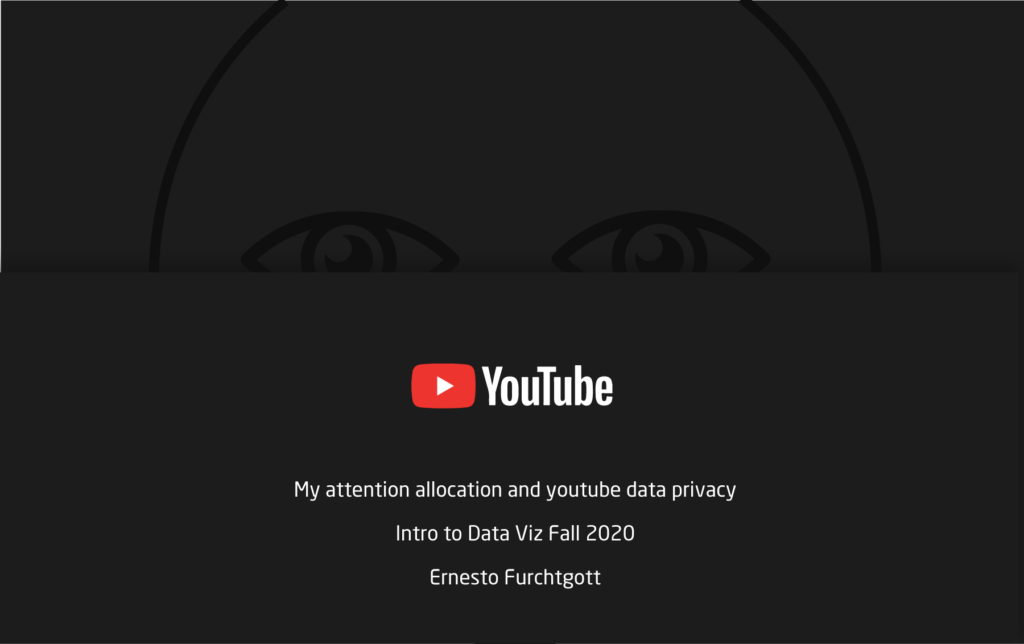
Question
With the increasing amount of time and attention we spend on our devices it’s important to discover how these are being allocated, what suggestions in the apps trigger our focus to stay more and more on these platforms and whether the companies that monetize this attention know more about us than we know about ourselves with regards to our motivations, as well as how much time we end up spending vs how much we intended to spend. The question becomes if the data can help educate ourselves and possibly to determine what course of action to take with regards to habits and the impact this is having on our psyche, since we know these companies don’t have our well-being as their primary focus.

Numbers represent total views per week

Numbers represent total views per week
How much am I being influenced to stay?
According to computer scientist and ethicist Tristan Harris (link below) 70% of our consumption in youtube videos comes from the recommendations youtube gives. This could be a more optimized attention, in what would otherwise be a waste of time looking at irrelevant topics given a particular taste, were it not for the fact that it also ends up reinforcing a particular behavior or view, regardless of consequence for the sake of profit.

Numbers represent total views per week
Using as a sample an average week in september on the most viewed subjects,
and comparing the data sets of what I searched for vs how much I ended up looking at, hints at patterns to what makes me keep watching; I watch a lot of the suggestions that appear on the home page once I sign into Youtube, which does’t even require a search to start the video, which would explain why the meditation view bar is bigger than the search bar. Since a lot of my consumption is for music, workouts or meditation for which I use a lot of the same videos, for these I have playlists which don’t require search.
But this algorithm also considers thousands of data points to make decisions I don’t have access to: How long did I stay in the video I was recommended, did I look at it for a bit and then switch? Does it know what times of the day to suggest certain things? Did I stop watching it but return 5 minutes later? All these are factors that supercomputers take into account.
An interesting find is that even though “Tutorials” has a higher rate of what I searched for vs what I actually ended up looking at, points towards the fact that often when looking for tutorials I tend to look for something specific and non generic, which would enlarge the number of searches without increasing the number of views and probably therefore of recommendations , but the fact still remains that the effectiveness of the search is still way better than if we compared it to a non-assisted tutorial search. We also don’t know to what extent which topic in my search history is me being already biased by the suggestions to look them up, as these phenomena, as I said before, reinforce behavior.
One of the ways in which I would like to expand this project, was that I found that a lot of the videos in the recommendations, and are probably videos I’ll just watch once, and make up a vast percentage of the total views, for example, interviews with people from topics I’ve looked for, entertainment facts about the topics I like, so I would like to see whether or not these suggestions vary form person to person, since not all these suggestions i get are necessarily the most viewed by most people.

Numbers represent total views per week
Conclusion- Final thoughts
Recent documentaries like “The Social Dilemma” in which previous members of these companies expose the engineering behind capturing our attention and the impact this has had on the human psyche (specially teenagers), the continuing debate on the spread of misinformation, and increasingly complex legislation regarding data privacy, the ad revenue model, among other topics that generate controversy shed a bad light on this.
However a lot of small businesses and entrepreneurs have flourished with minimal resources, like was never possible before, using targeted advertising at a fraction of the cost of what a billboard would cost, at a much higher rate of effectiveness.
Specially during these times of pandemic these resources have proven vital for society in the need to reinvent the advertising businesses need to survive.
A useful Sam Harris podcast surrounding this topic
– WELCOME TO THE CULT FACTORY A Conversation with Tristan Harris
https://www.youtube.com/watch?v=1se6POdUcWM&t=1253s&ab_channel=SamHarris


